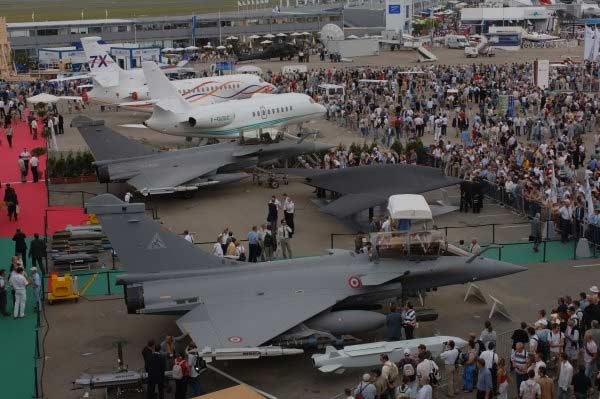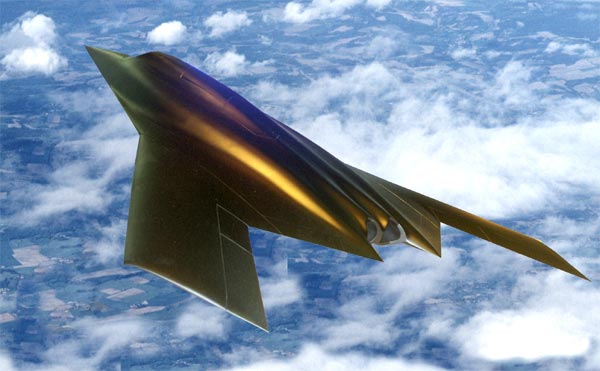|
Black Triangles |
||
|
Neuron on Display at a Paris Air Show ..
During the 2003 Paris Air Show, French Minister of Defence Mme Michele Alliot-Marie announced a major agreement signed between EADS, Dassault Aviation, and Thales. The agreement covered a joint-venture to "realize a new unmanned military technology that covers all future activity in combat and strategic reconnaissance aeronautics." EADS currently leads a HALE (High Altitude, Long Endurance) UAV project, and a manned/unmanned maritime surveillance project is also in the works based on work done by Thales, Dassault, and Elbit Systems. The Neuron UCAV program, meanwhile, is led by the French DGA defence procurement agency. DGA acts as the program executive on behalf of the participating countries, and has entrusted development of the first Neuron UCAV demonstrator to Dassault Aviation and its European partners. These include SAAB (Sweden) in particular, HAI (Greece), Alenia (Italy), EADS-CASA (Spain), and RUAG Aerospace (Switzerland). The Neuron program has three stated goals:
The second goal is to investigate and validate the technologies that will be needed by 2015 to design next-generation combat aircraft. The final aim is to validate an innovative cooperation process by establishing a European industry team responsible for developing next-generation combat aircraft.
More precise reports place France's share of the development funding at about EUR 185 million. Sweden's share would be SEK 750 million (EUR 80 million at then-current conversion), of which SEK 600 million (EUR 64 million) would be financed by Saab AB. The Swedish FMV procurement agency will offset Saab's costs, however, with an equal contribution to future development of the Saab JAS-39 Gripen manned lightweight fighter. The cost of Spain's participation to the program is estimated at EUR 35.5 million, spread over the 2007-2012 period. There are simular projects in the US (JCAS), Germany (Barracuda) and the UK (CORAX) The idea for the Neuron is to have a flying plane in
2011, and capability to launch bombs in 2012.
Its main design goals are low-observability (its radar cross-section will be comparable to that of an object the size of a tennis ball), weapon payload (in an internal bay) and launch of air-to-ground weapons. Neuron will be powered by a single engine, and have a top speed of about Mach 0.8. SOURCE: Eurotrib
|
||
|
..
April 28, 2005 10:54 AM
I'm expecting fashionably-sleek little wings and long, tapered missiles. The Italians are about to start testing a prototype killer drone of their own. Rome-based Alenia Aeronautica is aiming "to fly its new Sky-X unmanned combat aerial vehicle (UCAV) technology demonstrator by the end of May," according to C4ISR Journal. "The 7-meter-long demonstrator — which has a wingspan of 6 meters, takeoff weight of 1,100 kilograms and maximum speed of 800 kilometers per hour — will undergo flight trials at Sweden’s Vidsel military test range." The $43 million + drone is a technology demonstrator, mostly -- a test-bed to see how many decisions the plane can make on its own in midair. neuron.jpgPresumably, Sky-X's new-found smarts will be used to educate the larger, $360 million, pan-European UCAV that's in the works. France's Dassault Aviation is teaming up with Alenia, Saab, and a whole mess of other Continental defense contractors to build the Neuron killer drone. In early sketches, the Neuron looks a whole lot like the X-47 UCAV that Northrop is developing for the U.S. Navy. But the Neuron might wind up being way meaner than its American counterpart. According this website -- and take this unconfirmed report with a giant rucksack full of salt -- "the aircraft may have... the eventual ability to launch nuclear warheads." Robots with nukes? Tres mal, if you ask me. A prototype Neuron is supposed to take off from European runways starting in 2009.
|
||
|
Defense Contractor ..
Neuron Introduction (in French) Le démonstrateur européen d'UCAV : un projet structurant pour l'industrie européenne de défense Dans les vingt prochaines années, l'industrie européenne des avions de combat doit faire face à trois grands défis :
C'est pourquoi, face à cette situation, le gouvernement français a décidé de réagir en prenant l’initiative d’un projet de démonstrateur technologique d’un véhicule de combat aérien non piloté en coopération européenne. Avec le démonstrateur nEUROn, le but de l'initiative française est de donner aux bureaux d'études européens un projet qui leur permettra de développer et de maintenir leurs compétences stratégiques dans les années à venir. Ce projet ira au-delà des études théoriques conduites jusqu’à présent au sein de l'Union Européenne puisqu’il ira jusqu’à la construction et à la mise en vol d’un démonstrateur. |
||
| FAIR USE NOTICE: This page contains copyrighted material the use of which has not been specifically authorized by the copyright owner. Pegasus Research Consortium distributes this material without profit to those who have expressed a prior interest in receiving the included information for research and educational purposes. We believe this constitutes a fair use of any such copyrighted material as provided for in 17 U.S.C § 107. If you wish to use copyrighted material from this site for purposes of your own that go beyond fair use, you must obtain permission from the copyright owner. | ||
|
|





